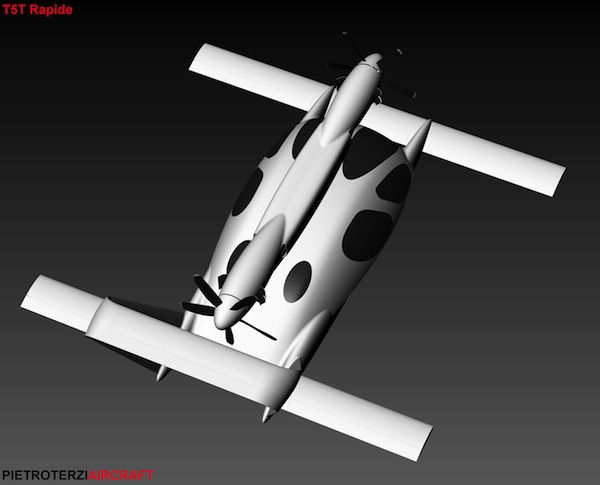|
È stato lanciato un programma di analisi aerodinamica computazionale CFD mirato a “congelare” la configurazione aerodinamica del T5T.
Per Pietro Terzi, Progettista del Rapide, “in questa nuova architettura a 4 superfici portanti (4LS) le componenti principali (ali, fusoliera, impennaggi, gruppo motopropulsore) oltre ad assolvere alla propria funzione specifica ,come avviene nei velivoli convenzionali, interagiscono in modo significativo tra di loro lavorando insieme come sistema aerodinamico”.
Le porzioni delle due ali in tandem interne ai due booms di supporto, utilizzando le loro superfici mobili, modificano la distribuzione delle pressioni sulla fusoliera a corpo portante. Il flusso intorno alla fusoliera viene anche energizzato dalle due eliche in configurazione push-pull per essere poi incanalato tra gli impennaggi a “ponte”.
L’indagine CFD copre l’inviluppo di volo che unisce prestazioni STOL a velocità di crociera pari a Mach .75 a 10000 metri di altitudine.
|
|
A CFD computational aerodynamics analysis program has been launched, aimed at “freezing” the aerodynamic configuration of the T5T.
“In this new architecture with 4 lifting surfaces ( 4LS ), the main components (wings, fuselage, empennages, powerplant), in addition to fulfilling their own specific function like they do on conventional aircraft, also interact significantly with one another, working together as an aerodynamic system”, says Pietro Terzi, the Designer of the Rapide.
The portions of the two tandem wings inside the two support booms modify the pressure distribution on the lifting body fuselage by using their mobile surfaces. The flow around the fuselage is also energized by the two propellers in a push-pull configuration, and is then channeled through the “bridge” empennages.
The CFD analysis covers the flight envelope, which combines STOL performance and a cruise speed of Mach .75 at an altitude of 10000 meters.
|

